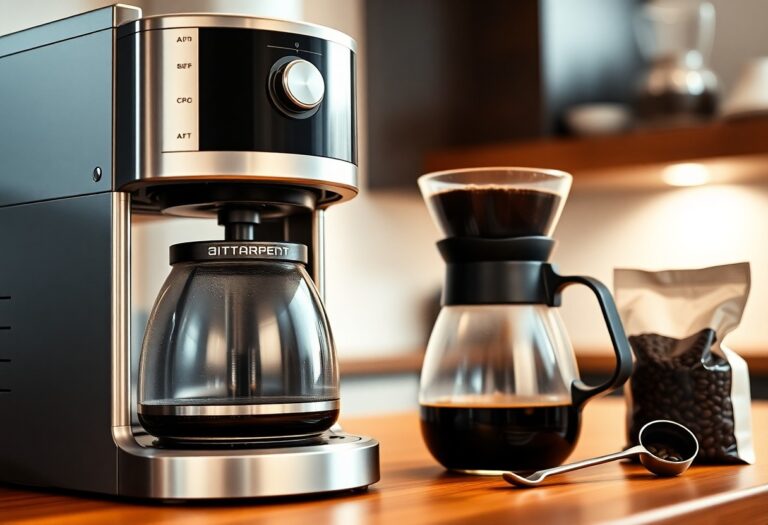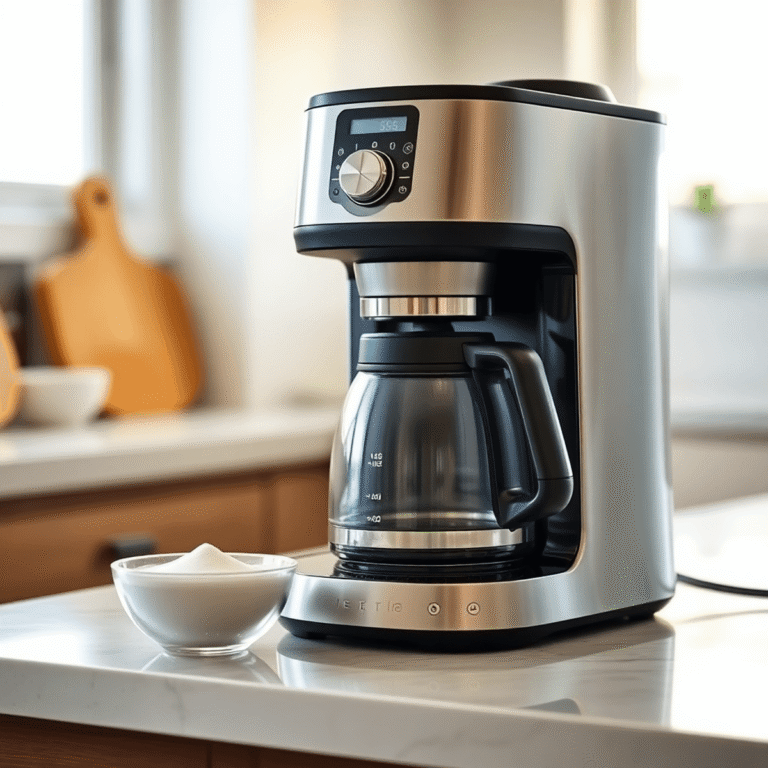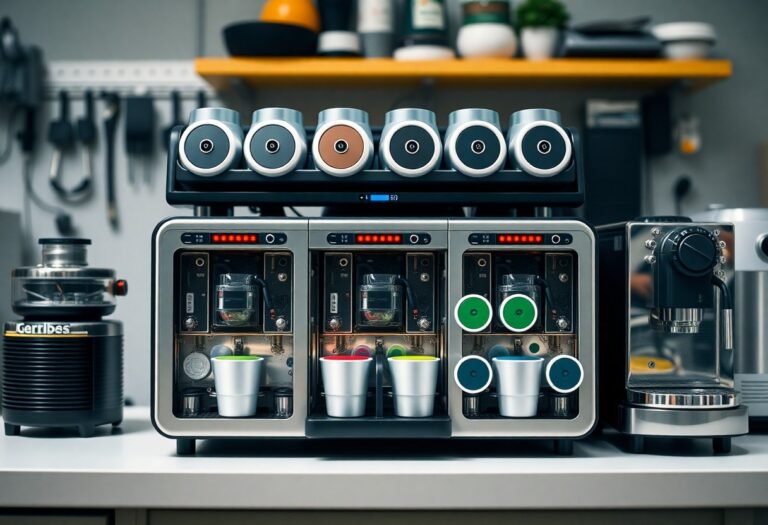What Coffee for Filter Coffee Machine – Drip Brewing Beans
Just like any other brewing method, choosing the right coffee for your filter coffee machine can significantly impact the flavor and aroma of your cup. Fresh, high-quality beans are crucial for a delightful brew, so look for coffees that are specifically labeled for drip brewing. Opt for a medium roast to enhance the natural flavors without overpowering bitterness, and consider adjusting your grind size for optimal extraction. By understanding your preferences and experimenting with different beans, you can elevate your daily coffee ritual to new heights.
Key Takeaways:
- Select medium to medium-fine grind coffee beans for optimal extraction and flavor in drip brewing.
- Choose freshly roasted beans for the best taste; look for a roast date on the packaging.
- Consider single-origin beans for unique flavor profiles or blends for a balanced cup.
- Pay attention to the coffee-to-water ratio, typically around 1:15 to 1:17 for most drip brewing methods.
- Experiment with different brewing temperatures and times to find your preferred flavor balance.
The Art of Selecting Beans for Drip Coffee
Choosing the right beans for your drip coffee is a delightful journey that directly impacts your daily coffee ritual. It involves understanding the origin, blend, and roast level of the beans to ensure they match your personal tastes and preferences. To discover the Perfect Coffee Beans for Drip Coffee Makers, you’ll want to explore the nuances that each type of bean brings to the table, whether it’s brightness from a single-origin or a harmonious blend of flavors.
Single-Origin vs. Blends: What’s Best for Your Taste?
Single-origin coffee beans offer distinct flavor profiles unique to their growing region, often showcasing bright acidity and varied notes. In contrast, blends combine beans from various origins, creating a balanced flavor that’s smooth and consistent. Choosing between the two depends on your preference; if you enjoy exploring diverse taste experiences, single-origin coffee is ideal, but for a reliable, everyday cup, a well-crafted blend can be more satisfying.
The Roast Level: Light, Medium, or Dark?
The roast level of your coffee beans defines the overall taste and aroma of your cup. Light roasts retain the natural flavors of the beans and are characterized by their acidity and fruity notes. Medium roasts balance acidity with some richness, while dark roasts offer bold, robust flavors and a smoky finish. Selecting the roast level that aligns with your palate is imperative for crafting the perfect drip coffee experience.
Light roasts, generally ranging from 180°F to 205°F, preserve most of the bean’s origin flavors, resulting in a vibrant and aromatic cup that can sometimes be considered more complex. Medium roasts, roasted a little longer, mellow out the acidity while adding depth and body, making them popular among many coffee drinkers. Dark roasts typically start from 210°F onwards, developing a richer flavor profile that can overshadow the bean’s inherent characteristics. Understanding these roast levels can be your key to unlocking the ideal cup of coffee tailored to your taste preferences, ensuring each sip is enjoyable and fulfilling.

Grind Size: The Key to Brewing Perfection
The grind size of your coffee beans directly influences the flavor profile of your brew, especially in a filter coffee machine. For optimal flavor extraction, aim for a medium-coarse grind which allows water to flow through grounds uniformly. This grind size encourages even extraction, capturing the rich, aromatic oils crucial for a satisfying cup. A meticulous approach to grind size will set the stage for a coffee experience that exceeds expectations.
Why Coarse Grind is Crucial for Filter Coffee
Choosing a coarse grind for filter coffee is crucial to prevent over-extraction. A finer grind can lead to overly bitter flavors as hot water extracts too many compounds too quickly. With a coarser grind, water flows through more easily, promoting a balanced extraction without lingering bitterness, which ensures a pleasant and aromatic cup each time.
The Impact of Consistency on Flavor Extraction
Uniformity in grind size can dramatically affect your coffee’s taste. When particles are inconsistently sized, some may become over-extracted while others remain under-extracted, resulting in an imbalanced flavor profile. This variance not only alters the bitterness and acidity levels but can also mask the nuanced flavors inherent in the beans. For the best results, aim for a grind that is consistent in size, helping you achieve a harmonious balance of flavors.
Achieving consistency in your grind size is paramount. For instance, using a burr grinder can provide uniformity compared to a blade grinder, which often produces uneven grounds. This uniformity allows water to interact with the coffee grounds evenly, ensuring that all flavor compounds are extracted appropriately. Studies have shown that coffee brewed from consistently ground beans yields a cup with greater depth and complexity, showcasing the inherent qualities of your selected beans. A commitment to proper grind uniformity not only refines your brewing process but elevates your overall coffee experience.
The Role of Freshness in Quality
Freshness significantly impacts your coffee’s flavor profile and aroma, making it necessary for a delightful cup. Beans lose their flavor rapidly after roasting, with the ideal consumption window being within 2 to 4 weeks. If you’re keen to explore tailored options, check out How to Find the Right Drip Coffee For You for insights on selecting the freshest beans suited for your taste.
How to Assess Bean Freshness
To determine bean freshness, inspect the roast date on the packaging. Fresh beans display a rich aroma and glossy sheen, while older ones tend to have a dull appearance. Additionally, conducting a quick taste test can reveal flavor dullness or mustiness that indicates staleness. The absence of vibrant flavors means your coffee experience is compromised.
Best Practices for Storing Coffee to Preserve Flavor
Proper storage is fundamental to preserving your coffee’s flavor. Ideally, keep your beans in an airtight container located in a cool, dark place, such as a pantry. Avoid exposure to light, air, and moisture, as these elements accelerate freshness loss. Choose a container made of opaque materials to further shield against light, and consider using vacuum-sealed bags to enhance longevity.
Investing in quality storage solutions, like a dedicated coffee canister, can make a significant difference in maintaining flavor. Additionally, only purchase what you plan to consume in a few weeks to minimize the risk of staleness. Purchasing whole beans instead of pre-ground coffee also ensures maximum freshness, allowing you to grind them right before brewing for the best possible flavor experience. Your daily cup of coffee deserves nothing less than the freshest spirits to awaken your senses and elevate your mornings.
Brewing Techniques to Elevate Your Filter Coffee
Mastering the subtleties of drip brewing can unlock a new dimension of flavor in your filter coffee. Adjusting brewing techniques including water quality and brewing ratio allows for a tailored experience, enabling you to extract unique notes and refine the overall taste of your cup. With these nuances in mind, you can transform your daily brewing routine into an art form that consistently delivers satisfying results.
Water Quality: The Underrated Ingredient
Considering water quality can significantly improve your coffee’s flavor, yet many overlook this important element. Ideally, you want filtered water that’s free from impurities and high in mineral content, which enhances extraction. Tap water often contains chlorine and other additives that might alter the coffee’s natural taste. By using high-quality water, you set the foundation for a more vibrant cup.
Brewing Ratio: Finding the Perfect Balance
The brewing ratio plays a pivotal role in achieving the desired strength and flavor profile of your filter coffee. A standard starting point is a ratio of 1:15, meaning for every gram of coffee, you’d use 15 grams of water. Adjust this ratio based on your preferences or the specific bean characteristics, but maintaining a balanced approach ensures you don’t overwhelm your palate or dilute the coffee’s essence.
Experimenting with the brewing ratio can unveil different flavors and aromas in your cup. For instance, if you find your coffee too weak, try increasing the coffee quantity, or for a more concentrated brew, reduce the water volume. Each bean variety may recommend its ideal brewing ratio, and by keeping notes on adjustments, you can easily replicate your favorite brews while fine-tuning the balance over time.

Beyond the Brew: Experimenting with Additives
Diving into the world of coffee additives allows you to tailor your brew to reflect your personal taste. From earthy spices to creamy alternatives, these elements can transform a standard cup into a flavorful experience. Whether you’re enhancing a rich Arabica or balancing a bold Robusta, the options are limitless. Consider indulging in experimenting with various additions to discover signature combinations that elevate your daily sip.
Flavor Enhancers: Spices, Creamers, and More
Incorporating flavor enhancers into your drip coffee can unlock an entirely new dimension of taste. Options like cinnamon, nutmeg, or even cardamom can introduce warm, spicy notes, while creamers or flavored syrups provide sweetness and richness. Each enhancer contributes to your coffee’s unique profile, allowing you to play with tastes and aromas that align with your personal preferences. Experimentation is key—consider alternating between different combinations to find what resonates best with your palate.
Understanding Espresso vs. Drip Coffee: A Comparative Analysis
Espresso and drip coffee represent distinct brewing methods, each delivering unique flavor experiences. Espresso is characterized by its concentrated richness, usually crafted with finely ground beans and high-pressure extraction, producing a small, flavorful shot. In contrast, drip coffee relies on gravity and filter extraction, resulting in a larger, milder brew with a softer mouthfeel. Comparing these methods highlights differences in flavor intensity and preparation style, emphasizing the importance of your taste preferences.
| Method | High-pressure extraction vs. Gravity-fed filtration |
| Flavor Profile | Rich and concentrated vs. Milder and smoother |
| Serving Size | Small shot (1-2 oz) vs. Larger cup (8-12 oz) |
| Grind Size | Finely ground vs. Coarsely ground |
| Caffeine Content | Higher per ounce vs. Lower per ounce, but larger serving overall |
Espresso’s unique brewing method results in a strong flavor profile due to its concentrated nature, while drip coffee shines through its gentle extraction process. Weight and grind size play significant roles in these outcomes. Additionally, the variations in caffeine concentration highlight how your choice of brew can influence the energy boost you experience. Ultimately, it’s your preference that dictates whether you lean towards the robust shot of espresso or the subtle nuances of a well-made drip coffee.
Summing up
Upon reflecting, choosing the right coffee beans for your filter coffee machine is necessary for achieving the perfect brew. You should opt for medium to coarse ground beans, ideally fresh and with a roast profile that aligns with your flavor preferences. Beans labeled as medium roast often showcase a balanced acidity and sweetness that complements drip brewing. Additionally, experimenting with single-origin coffees can enhance your coffee experience, allowing you to appreciate distinct flavors. By paying attention to these factors, you can elevate your morning ritual and enjoy delicious coffee tailored to your taste.
FAQ
Q: What type of coffee beans should I use for a filter coffee machine?
A: For filter coffee machines, medium to medium-coarse grind coffee beans are recommended. Arabica beans tend to provide a smoother and more complex flavor profile, while Robusta beans add a stronger, bolder taste. It’s vital to choose freshly roasted beans for the best flavor, ideally within two weeks of roasting.
Q: How do I determine the right coffee-to-water ratio for my drip coffee?
A: A general guideline for drip brewing is to use about 1 to 2 tablespoons of coffee per 6 ounces of water. Adjust the amount based on your taste preferences, as some may prefer a stronger brew while others might like it milder. Experimenting with different ratios will help you find the perfect balance for your palate.
Q: Is it important to use filtered water when brewing coffee?
A: Yes, using filtered water can significantly improve the flavor of your coffee. Tap water often contains minerals and chemicals that can alter the taste of the coffee. Filtered or bottled water is ideal as it eliminates unpleasant flavors, allowing the true essence of the coffee beans to shine through.
Q: Should I pre-wet the coffee filter, and why?
A: Pre-wetting the coffee filter is a good practice as it helps to eliminate any paper taste that may affect your brew. Additionally, it activates the filter, allowing for better extraction of flavors. Simply pour a small amount of hot water over the filter before adding coffee grounds to improve the overall taste of your brew.
Q: How long should I brew coffee in a drip coffee machine?
A: The brewing time for a filter coffee machine typically ranges from 4 to 6 minutes, depending on the model and the amount of coffee being brewed. It’s important to monitor the brewing process, as brewing too long can lead to over-extraction, resulting in a bitter taste. Adjust the grind size and coffee amount if you need to refine the brewing time further.







